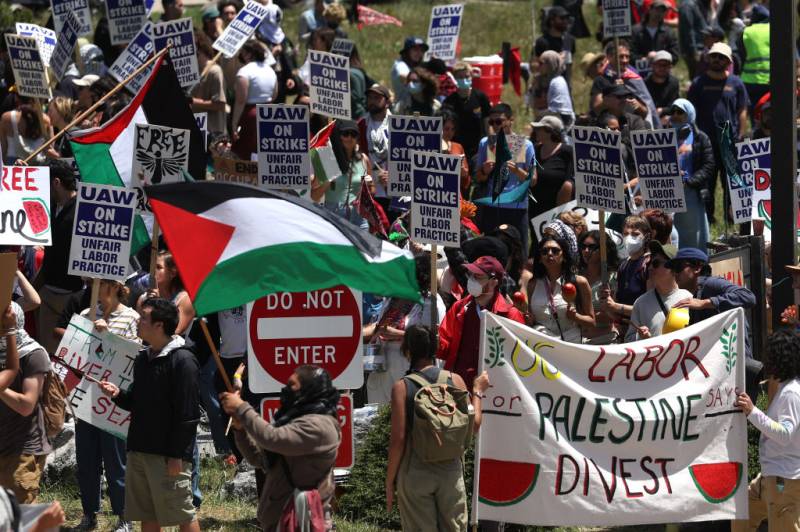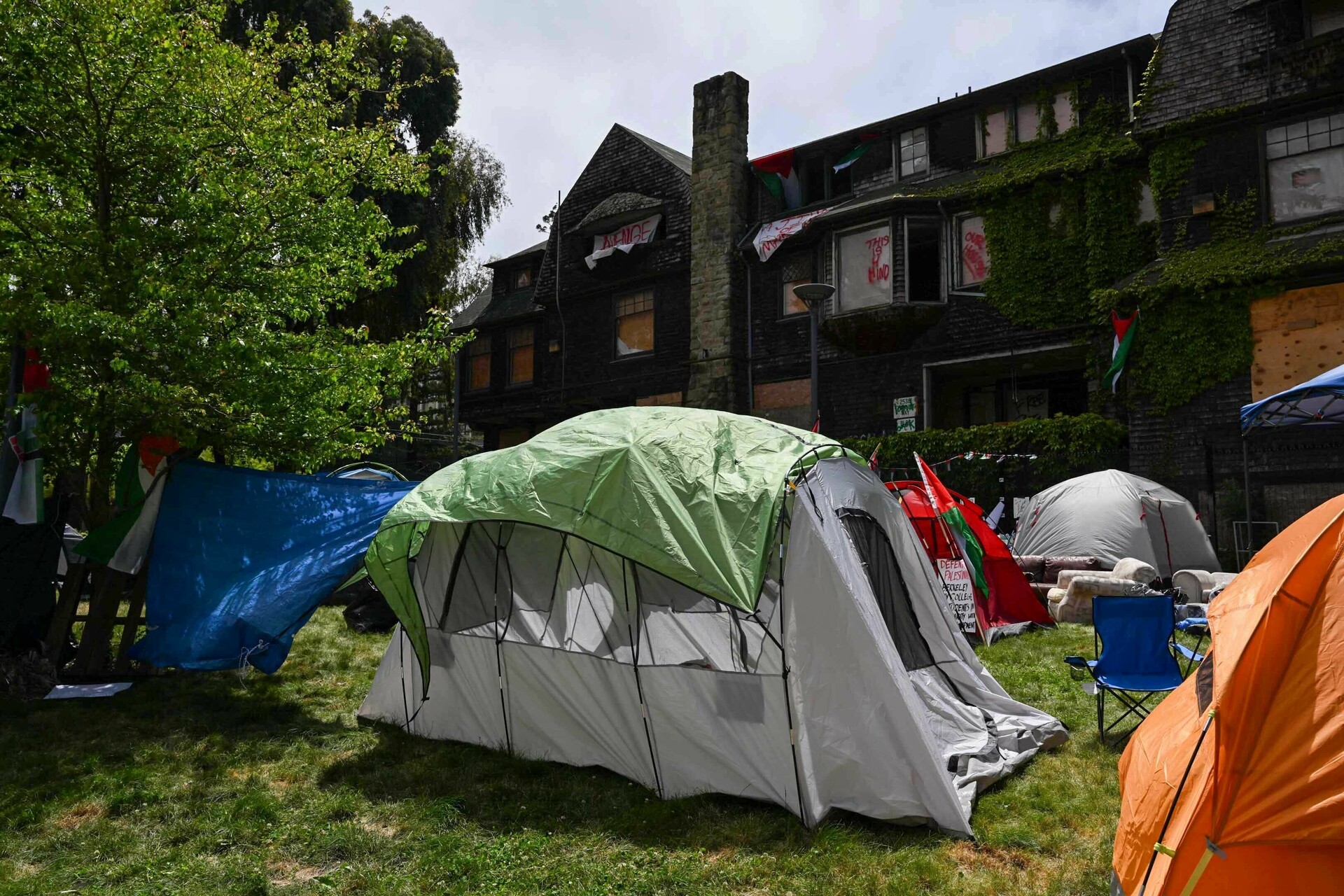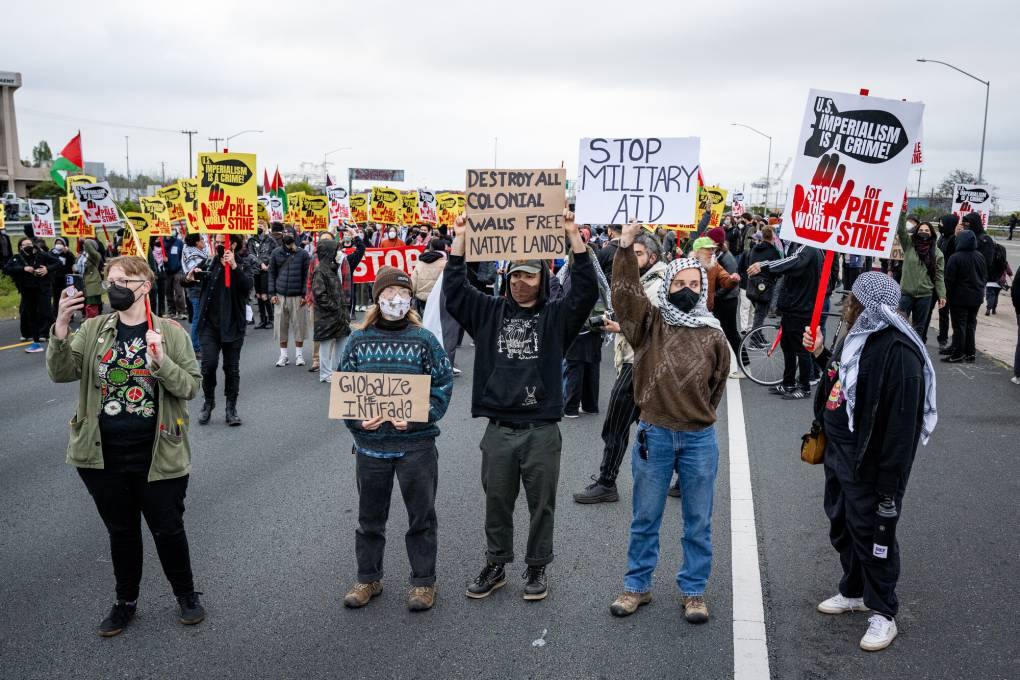Emails show law enforcement officers developed an action plan to combat what they described as the “threat of domestic violent extremism and criminal behavior” supposedly presented by protesters, and they shared these plans and materials with incoming officers from around the state.
One SFPD sergeant and 10 officers were deployed to the Redwood campus at 11 p.m. on April 29, SFPD said. SFPD provided “a uniformed presence,” “traffic control,” and “assisted in a skirmish line one block away” from where local police and Humboldt County sheriff’s deputies were making arrests, according to the report. Officers also received overtime for the deployments.
“Support only for local police as needed/necessary due to possible violent participants,” SFPD said in the report.
Jose Quezada, a photographer for the Eureka Times-Standard who was escorted off the campus on April 30, said there were officers “from all over.”
The officers were “fully armed with everything that I can imagine law enforcement or a militarized person could have,” Rouhollah Aghasaleh, an assistant professor at Cal Poly Humboldt’s School of Education, told KQED.
Griffin Mancuso, the editor in chief of the Cal Poly Humboldt student-run paper, the Lumberjack, said students heard rumors leading up to the April 29 raid that officers from out of town were coming to campus. The evening that hundreds of riot police arrived to arrest protesters and take down barricades, Mancuso said he saw police cars from other counties parked around the campus.
“We knew that that was a possibility going in, that there would be a fairly wide variety of officers,” Mancuso said. “I think [local police] were kind of preparing for the worst. I personally expected it to escalate way more than it actually did. And thankfully it didn’t. But I can only assume that’s why they pulled in officers from around California. We don’t really have a super extensive police force here, and we certainly don’t have the kind of gear that other forces do from bigger cities.”
Benedicto said deployment decisions are made by the San Francisco police chief and command staff, not the Police Commission, which is tasked with setting policy and has some oversight authority.
“We’re not going to micromanage the department in terms of its individual deployment decisions. That’s not something the commission wants to be in the position of doing or does,” Benedicto said. “I think the outcome, hopefully, is to ensure that the public are aware that this is how their resources are being used.”
KQED’s Sara Hossaini contributed to this report.


